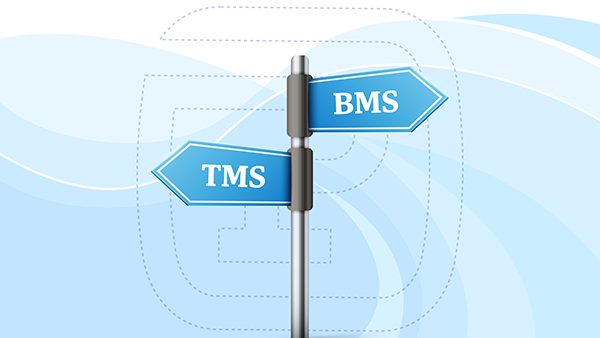
We have already written about this subject on numerous occasions, but we have noticed that translation company project managers still often mean different things when they say ‘translation management system’ or ‘TMS’, and still confuse different translation and business tools. So we will try to explain the difference in more simple terms.
The main thing to consider is what you are managing:
- If you need to manage texts, translation memories, and you need a tool to do translations, then you need a translation management system (TMS), such as memoQ, Memsource, Smartcat etc.
- If you need to manage clients, translators, prices, invoices, payments, and business reports, then you need a translation business management system (TBMS or just BMS), such as Protemos, XTRF, Plunet etc.
As you can see, these tools are used for very different things. But they have an overlapping feature that can cause confusion. They are both used to manage translation workflow. You can assign jobs to translators and manage the files in both in TMS and BMS tools. So technically both of them can be used as translation project management tools.
But in BMS, there is no translation memory, glossary or text editor, while in TMS there is no invoicing, project balance, client database, business reports etc. And you cannot manage non-translation projects in TMS.
Here is a general illustration of overlapping and unique features:
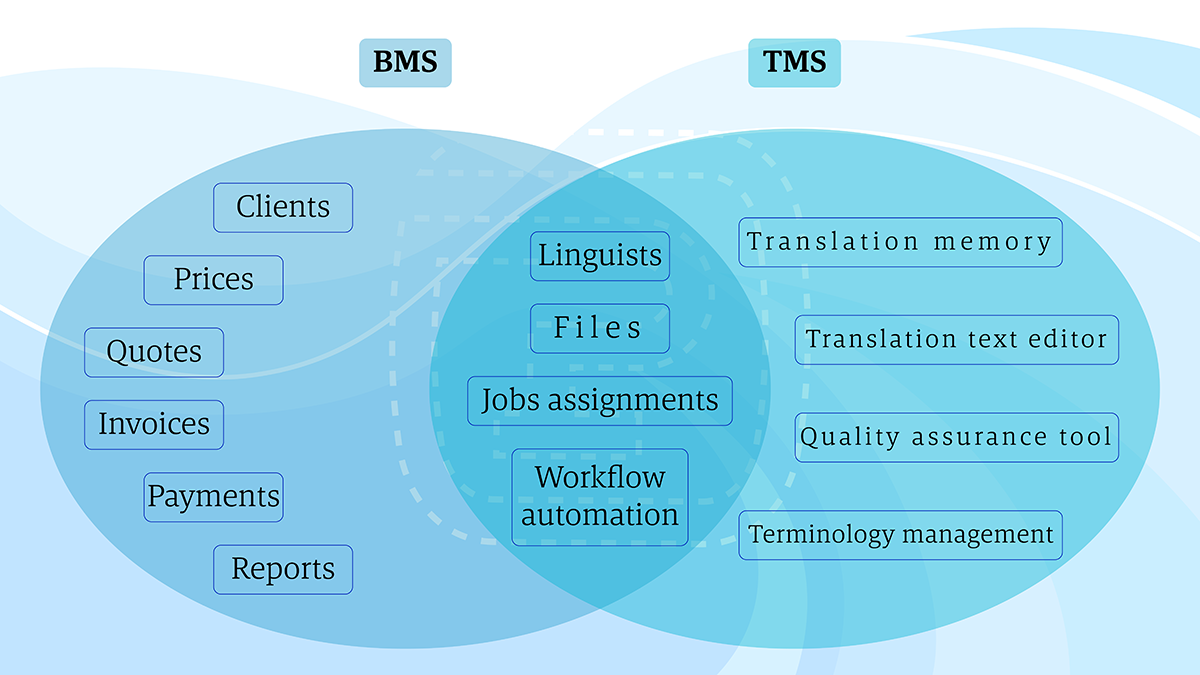
As you can see above, you can assign jobs and files to your translators both in BMS and TMS, which means that you can manage a translation project in both of them. If you manage it in BMS, then you’ll need to tell the translators what tool is required for the translation. If you use TMS for this purpose, it includes a translation tool, but finance and business-related matters need to be managed outside of the TMS.
The questions remains if BMS and TMS tools are interchangeable and compete with each other. In most cases, they do not. And we will explain why.
Let’s first consider an ideal situation: you have acquired a TMS system, you receive files from your clients and manage them all in the TMS. Your clients are happy with that or are not even aware of the existence of CAT tools. But then you will need to keep finance-related records elsewhere, create and track invoices in third-party tools, and compile business reports manually. It is doable but takes time and effort which could have been put to much better use for your business.
But in reality, this does not work, because not all jobs can be done in one tool. Your clients may want their jobs to be done in different CAT tools, and many of them may have their own TMS tools which they want you to use. And translation companies may do non-translation jobs too, such as voiceover, DTP, interpretation, and much more. So not all projects may fit into the scope of a TMS, and one TMS may be not enough.
But you need a place to track and manage all the work done by your company, and for this a BMS comes in handy:
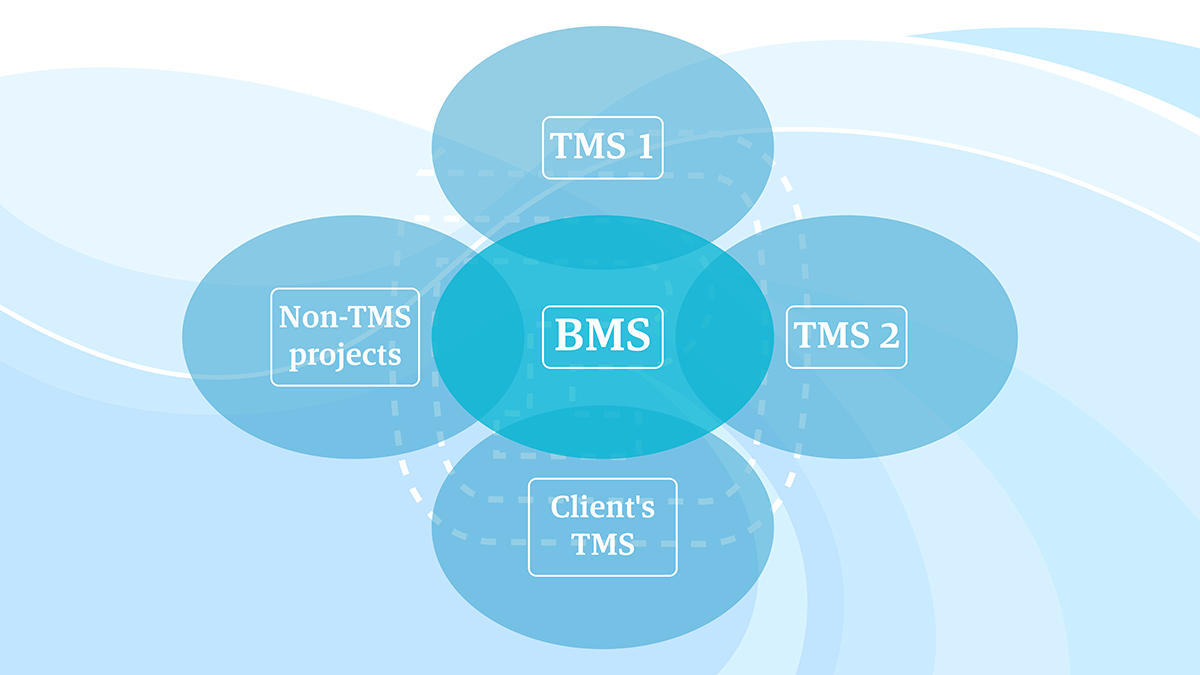
So BMS and TMS complement each other, but do not replace each other, and they should be used in tandem. However, if you have both a TMS and BMS, it means that each translation project needs to be created twice. For example, if you use memoQ and Protemos, you have to create the same project in 2 systems, which takes extra time. To avoid copy and paste work, the systems can ‘talk’ to each other via an API:
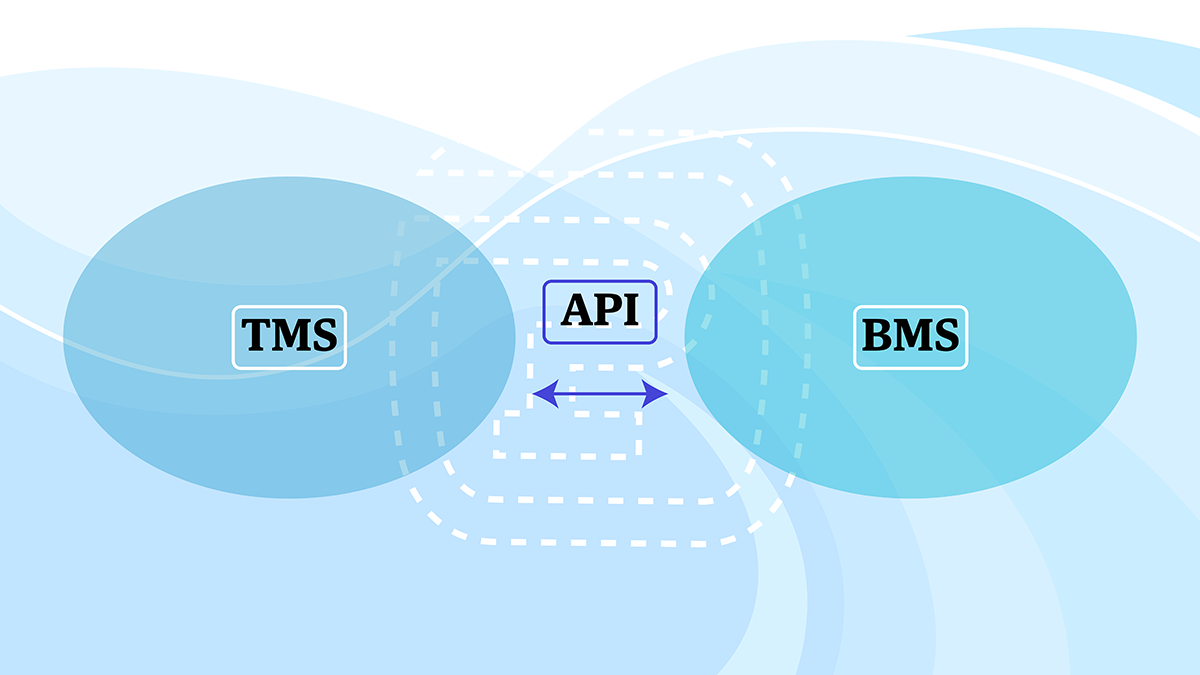
API is a technology that lets you move data between the systems automatically and so avoid dull copy and paste work. For example, you may create a translation project in a BMS, and push a button to replicate it in your TMS. Or vice versa, if you have a project in a TMS, you can replicate it in your BMS.
BMS tools can also be connected via API with other tools. For example, you may connect your clients’ quote requests, CRM system, accounting tools, and governmental services to your BMS:
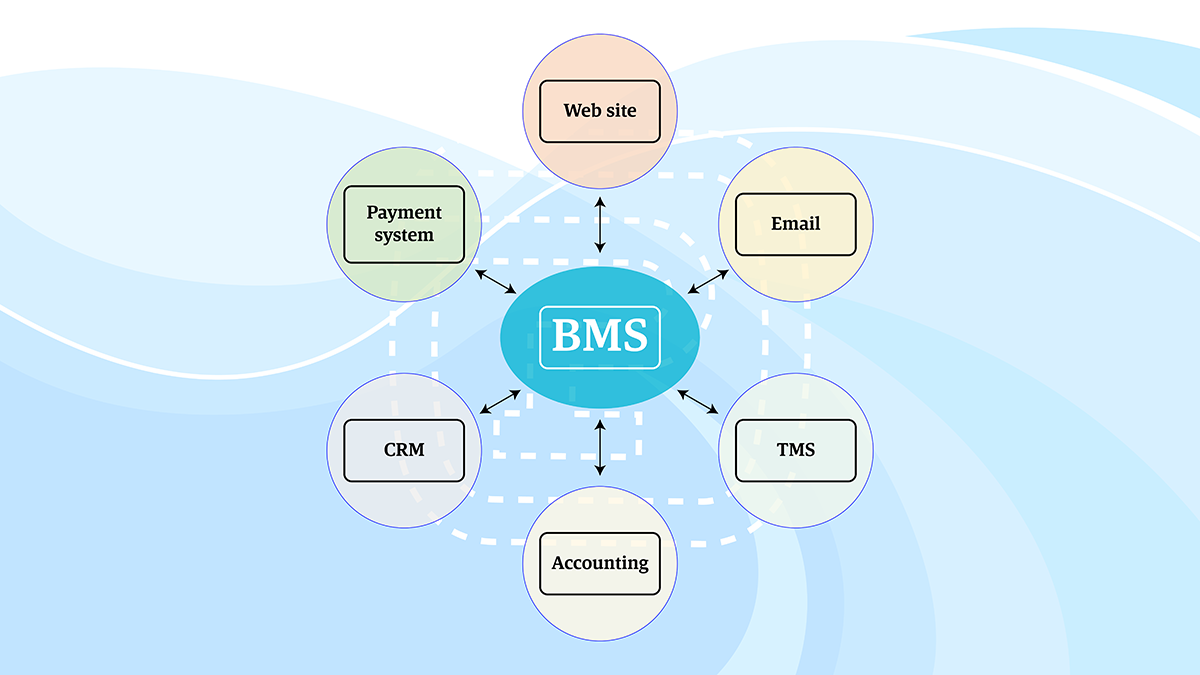
So translation business management systems (BMS) are not just stand-alone tools; they can become a part of your company ecosystem and connect to other software that you are using. And translation management systems (TMS) also connect to other tools, so the ecosystem may grow infinitely:
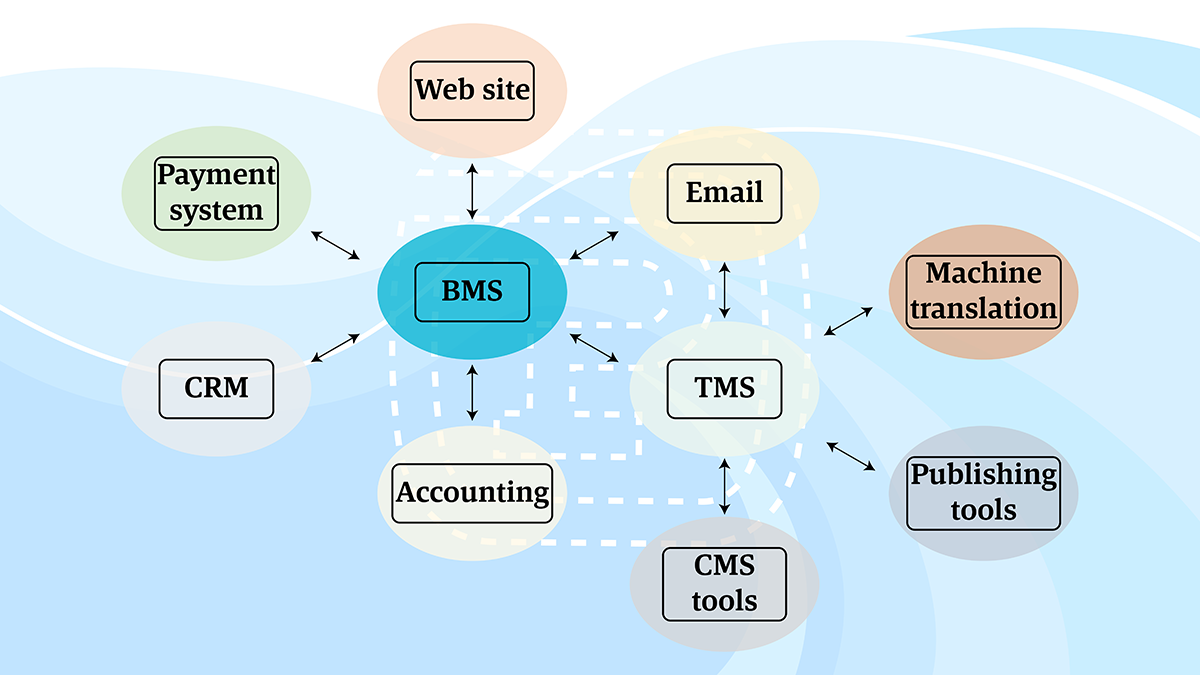
In the picture above we have tangented away from the original subject, but we hope it gives you a better understanding of how workflow management systems may be used in translation companies.

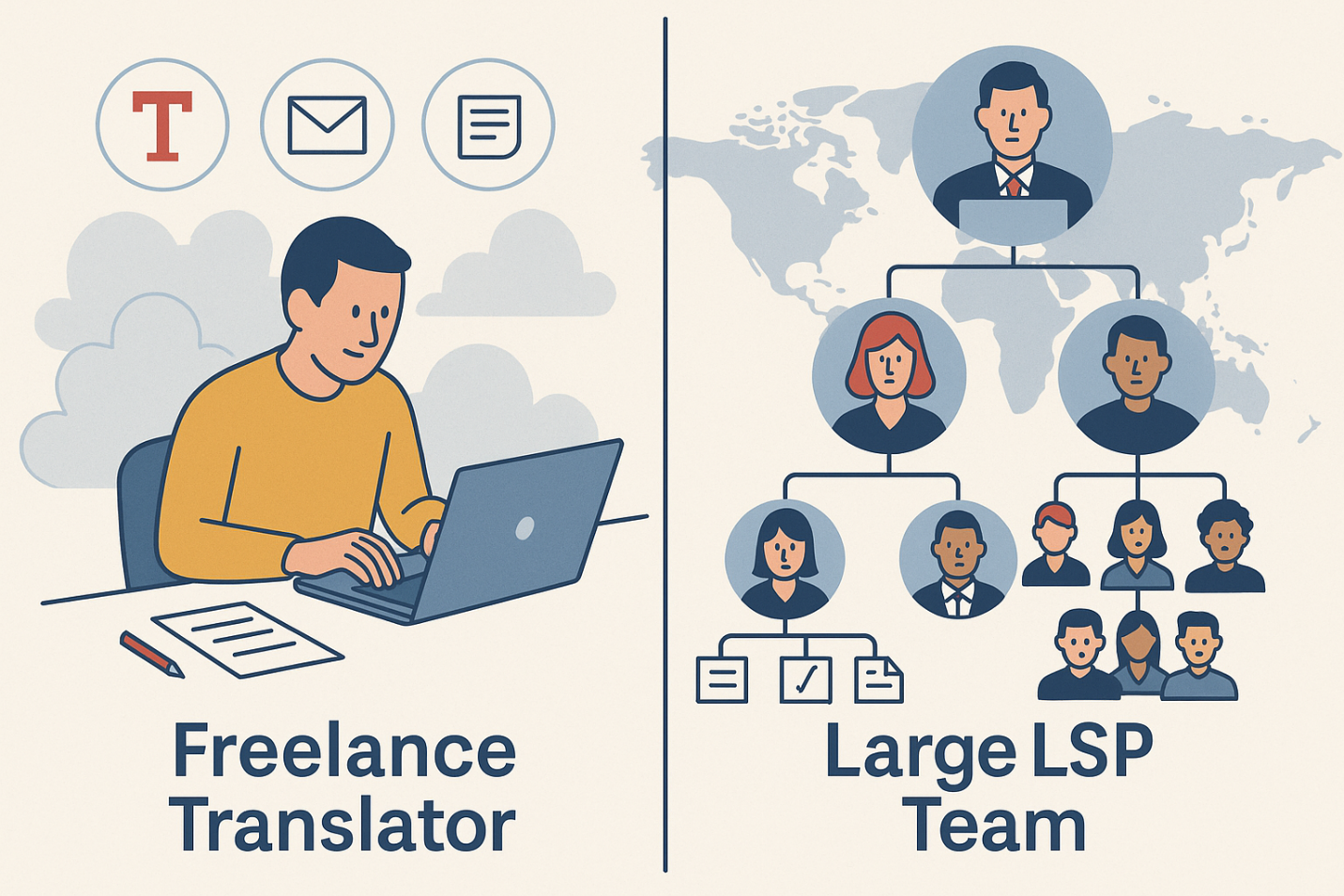
.png)
.png)

